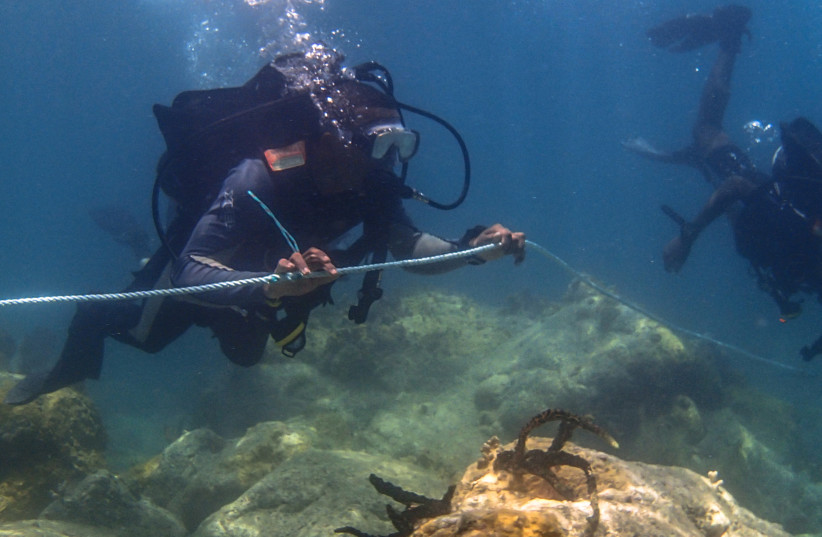A blue hole has opened up in Chetumal Bay in the West Caribbean, the second largest to have ever been recorded.
The blue hole, which has been named Taam ja’ Blue Hole (TBH) or ‘Deep Water Hole in English’ has an estimated maximum depth of 274.4 meters below sea level. The deepest hole ever recorded, known as The Dragon Hole, has a depth of 300.89 meters below sea level and is located in the South China Sea.
A new peer-reviewed study, published in the journal Frontiers, examined the blue hole.
What is a blue hole?
A blue hole is a cave that digs vertically down from the ocean’s floor. It is typically formed out of eroded limestone, with an open rounded mouth on the sea floor.
Blue holes are opportunities for scientists to explore the survival of life in a hostile environment. Blue holes lack oxygen and other crucial markers for life, making it an ideal environment to study the potential to live on an alien planet.

Taam ja’Blue Hole
Scientists explored TBH in 2021, using echosounders, CTD profiling and chemical water sample extractions to understand the conditions. The scientists were able to travel 20 miles below sea level by using scuba equipment.
The scientists found that TBH had numerous discontinuous terraces at 10 miles below sea level, near the eastern and northwestern walls of the hole. The scientists also located irregular rock structures and ledges in the internal walls.
The walls of the hole were covered in a grainy substance that the scientists believe to be, even though it isn't confirmed, gypsum. Gypsum is a a soft sulfate mineral composed of calcium sulfate dihydrate. The scientists also found brown algal biofilm on the walls, but these were easily disturbed and hadn’t ingrained themselves on any structures.
The water temperature reduced from 30.0 to 24.7°C as the scientists descended.
The researchers recorded thermoclines (temperature gradients) and haloclines (salinity gradients) at 99.3 and 136.9 miles below sea level, the gradients of which were 0.03-0.04°C/m and 0.11-0.19 PSU/m.
The lack of oxygen, light and the acidic chemical make-up of the water prevented photosynthesis from occurring. However, wind-mixing processes were enabled in the environment.
Further studies needed
The researchers recommend that future studies be conducted to understand the microbial diversity of the hole. They also recommend that hydrogen sulfide measurements be taken, as “ the reduction of sulfates is among the main metabolic pathways in karstic aquifers.”
"Karst aquifers are underground reservoirs of water in karstified rocks. Like all aquifers, they are fed by water from the surface. This water flows underground where it can be captured by wells for people to use. Eventually, the water reaches an area at a lower elevation where it flows back to the surface from springs," according to the International Year of Caves and Karsts.
“Suspended solids, turbidity, photosynthetically active radiation (PAR), biological components, and sediment analysis are also suggested to allow the identification of the biogeochemical processes concerning the stratification of blue holes,” the researchers add.
To understand the age of the newly-discovered hole, the researchers recommend that isotopes also be analyzed.